Infrastructure Wiring Basics
In this chapter, you will learn about
- Structured wiring
- Future proofing a home’s communication systems
- Structured wiring installation requirements and techniques
If you haven’t already figured it out, structured wiring is a primary element of a home technology integration or home automation project. Even without installing automated systems and controls, structured wiring makes sense if all that it is used for is distributing telephone, audio, video, or data networking systems.
This chapter covers some of the basics of structured wiring and its components and why and when they are included in a system. The chapters in Parts 3 through 8 of this book cover each of the separate subsystems in much more detail, but this chapter provides you with an overview of why structured wiring is installed in a home and how it benefits the homeowner.
Structured Wiring
There is a big difference between structured wiring and wiring that is not structured. A home’s structured wiring system facilitates the delivery of services and the interconnection of the various subsystems to create an integrated technology environment. Structured wiring is the foundation on which a home automation network is built because it provides a planned and organized method of residential low voltage wiring allowing for efficient hook-up and future changes and additions.
The term structured when applied to the wiring of a home’s voice, data, audio, video, and control networks means that the wiring for all of these systems was designed as a single entity to be installed in a single operation and not as separate and discrete systems to be installed individually. When properly designed and installed, a structured wiring system should minimize the amount of cable to be installed and maximize the capabilities and flexibilities of the systems attached to the structured cabling. Structured wiring provides several advantages over unplanned and unstructured wiring when designing and installing a wiring infrastructure in a home. As indicated in Table 5-1, structured wiring’s characteristics are more conducive to supporting a home network than an unstructured approach to system wiring.
|
Characteristic |
Structured Wiring |
Unstructured/Free-Form |
|---|---|---|
|
Appearance |
In or behind a wall |
In the walls, over the wall, or across the floor |
|
Installation |
Pre-wire, during remodel, or retrofit |
As required |
|
Availability |
Wall outlets |
Where required |
|
Form |
Planned distances and topology |
Free form |
|
Planned/Unplanned |
Planned |
Unplanned |
|
Flexibility |
Cross-connecting Changes and upgrades in the future |
No cross-connecting |
|
Documentation |
Labeled and documented |
May be labeled, but usually not documented |
Structured Wiring Components
The three primary components of a structured wiring system are as follows:
- Cable or wiring
- Distribution panel
- Outlets or access points
Cabling and Wiring
In any hard-wired system, the quality of the wiring installation is far more important than the quality of the wire. Don’t misunderstand, the quality of the wire is important, but how well the wiring is installed can have a major impact on how well the network implemented on the wiring supports the needs of the customer.
New Construction
The type of wiring you install depends on what the customer defines as the requirements of the network. As specified in the various cable standards (see Chapter 4), there are cable types to support virtually any requirement the customer may define.
The current data and voice standards are Cat 5 cabling (actually Cat 5e, the “e” means extended) and RG6 coaxial cabling. In a new construction situation, installing these cable types in the walls throughout the house provides an infrastructure that should support the networking needs of the home for years to come. As a rule of thumb, each room in a home (those rooms to which the home network will be extended) should have at least two runs of Cat 5 cable—one each for voice and data—and two runs of RG6 coaxial cable for video—one for upstream and one for downstream. In addition, you may want to also add speaker wiring, control wiring, and possibly runs of twisted-pair wire to all rooms for use with a security system.
Cat 5 Versus Cat 5e
Cat 5 and Cat 5e UTP cabling are essentially the same. However, Cat 5e's specification includes some additional limits that extend the bandwidth capability of Cat 5e. In reality, nearly all currently manufactured Cat 5 cable is equivalent to Cat 5e cable, but just hasn't been certified to the higher standards. Table 5-2 compares the basis characteristics of Cat 5 and Cat 5e cable.
|
Category |
Cable Type |
Bandwidth |
Maximum Segment Length |
|---|---|---|---|
|
Cat 5 |
UTP |
100 Mpbs |
100 meters |
|
Cat 5e |
UTP |
1000 Mbps |
100 meters |
In summary, the recommendations for the minimum wiring for each room of a new house are (per the TIA standards)
- 2 runs of Cat 5e (UTP)
- 2 runs of RG6 coaxial cable
Optional in each room:
- Additional runs of coaxial cable for use with in-room audio devices and speakers
- 1 or 2 runs of UTP cable to connect door and window contacts to a security system
Note Whether or not fiber optic cabling should be installed in new home construction for both data and video systems is something the customer should decide. The primary reason not to install fiber optic cable is cost; fiber can run up to $2 more per foot than UTP cabling. In addition, standards have not been settled on for the type to use and connectors for fiber optic cable. On the other hand, fiber can carry an extremely large amount of data and may be just the thing to carry the data and video speeds and bandwidth of the future.
Existing Structures
Retrofitting a home for Cat 5 wiring can be troublesome in many situations. It is always better to have a dedicated wire. When that is not possible, however, the use of Powerline, HPNA (see Chapter 10 for more information), or wireless systems should be seriously considered. Of course, you must determine which of these systems will best support the requirements of the network. In any case, these systems may not support the planned video or audio systems and cable must be installed in the walls anyway. If this is the case, we advise that the same amount of cabling be installed as recommended for new construction.
Integrated Cable Bundles
The growing popularity of structured wiring in homes has spawned new cable bundle types that incorporate all of the wiring recommended for a structured wiring installation. These bundles, like the one shown in Figure 5-1, include 2 Cat 5e cables for voice and data, 2-shielded RG6 coaxial cables for video, and in some bundled cables, 2 multi-mode fiber optic cables for present or future applications.

Figure 5-1: A structured wiring cable bundle
Photo courtesy of FutureSmart Systems, Inc.
Distribution Panels
One of the primary components in a structured wiring system is a centralized distribution panel. The distribution panel (see Figure 5-2) provides the system and the homeowners with a single central location where all incoming source signals are integrated and then distributed throughout the home. It also allows for the sharing of signals within them.
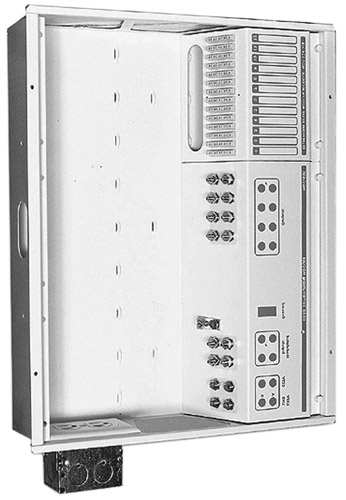
Figure 5-2: A structured wiring distribution panel
Photo courtesy of Smarthome Inc.
Depending on the needs of the system, the distribution panel can be used to connect incoming video, audio, telephone, and data signals to the appropriate wiring that will carry the signals to an outlet for connection and use.
The distribution panel also can serve as the hub of the star topology recommended for home automation and multimedia distribution systems. Each structured wiring run is installed as a home run from the room to the distribution panel. Panel boxes range in size to accommodate a variety of modules.
Modularity is a primary characteristic and key benefit of a structured wiring distribution panel. Service unit modules, such as an audio distribution module, data hub, or the like, can be added to the distribution panel at any time, not just at installation, and allow for services to be added to the system in the future.
Distribution Panel Subsystems
There are high-end, fully populated distribution panels, mid-range panels with the basic connecting systems, low-end simple panels with only voice, data and video, and modular distribution panels that can be assembled to fit a particular situation exactly.
Higher-end distribution panels, like the one shown in Figure 5-3, which most manufacturers refer to as their “pro,” “gold,” or “platinum” series, typically include pre-installed modules to support what could be considered to be the standard subsystems of a structured wiring scheme: data, telephone, audio, and video. In cases where there is a need to support a modem, DSL, ISDN, cable or satellite TV, and other audio/video source devices, optional modules can be added to the distribution panel’s housing for integration of these devices.
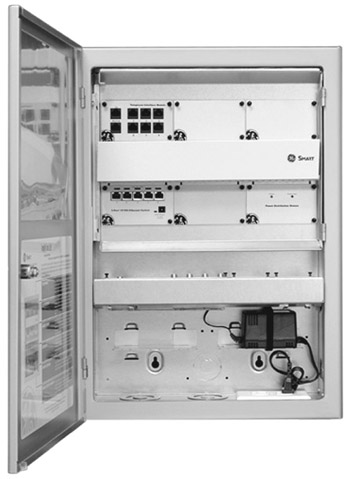
Figure 5-3: A distribution panel with some modules pre-installed
Photo courtesy of General Electric Company.
For a more customized system, the distribution control panel can be purchased as an empty enclosure or panel (see Figure 5-2) and separate system modules and assembled to support the signal distribution requirements of the home’s structured wiring system. Figures 5-4, 5-5, and 5-6 are examples of modules that can be installed in the distribution panel.
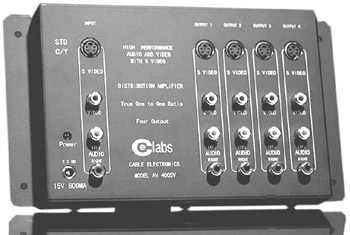
Figure 5-4: An audio/video amplifier module of the type that can be installed in a distribution panel
Photo courtesy of Smarthome, Inc.
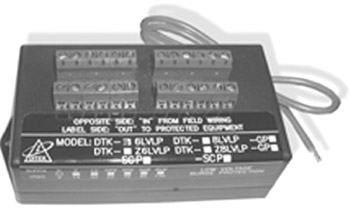
Figure 5-5: A low-voltage surge suppression module should be installed in the distribution panel
Photo courtesy of CyberResearch, Inc.
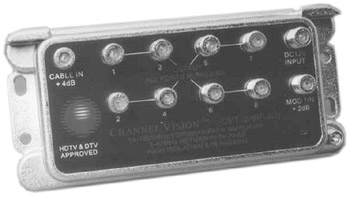
Figure 5-6: A video amplifier and splitter that can be installed in a distribution panel
Photo courtesy of Channel Vision.
Using a distribution panel provides several benefits to the homeowners:
- The ability to alter the mix of incoming source signals without rewiring
- The ability to easily change the interconnections and distribution of services to outlets
- The ability to upgrade services in the future without wiring
Distribution Panel Components
Structured wiring distribution panels organize the wiring supporting multiroom television, video, telephone, audio, and data networks and distribute it to each room. Of course, it depends on the systems included in the home, but some distribution modules are considered to be fairly standard:
- AudioA sound distribution amplifier (see Figure 5-4) that is able to patch incoming audio sources to usually two to eight different speaker sets.
- DataA data patch panel with IDC (Insulation Displacement Connector) connectors is used to connect the Cat 5 cabling distributed in the structure wiring system to distribute the signal on the Internet Gateway device.
- Surge suppressionFew, if any, of the amplifiers, interconnects, or control modules installed in the distribution panel include surge suppression circuits themselves. So, it’s a very good idea to protect the modules and devices in the distribution panel from power spikes on the electrical power source by installing a surge suppression device (see Figure 5-5) in the distribution panel.
- VideoA video splitter or amplifier (see Figure 5-6) distributes the video signals from outside and inside the home to the outlets over the structured wiring. However, multiple video in and out connectors provide better distribution and flexibility for the system to handle cable, satellite, or HDTV signaling.
- VoiceThe telephone wiring that runs from the demarcation point, where the telephone service wiring enters the home, is interconnected into a distribution patch panel using IDC contacts. The telephone wiring (Cat 5) that runs to the various handsets in the home are also interconnected into the distribution panel.
- Wireless audio/video/dataEven if wireless distribution is to be used for one or all of the distributed systems, the distribution panel can provide the link between the incoming wiring and source devices and the wireless network access point (NAP).
Future proofing the System
One of the best benefits of modifying distribution or installing a structured wiring system in a home is that it helps to future-proof the home, at least in terms of adding future audio/video and data systems. By future-proof we are referring to structured wiring adding flexibility to any home because of the inclusion of its centralizing and interconnecting distribution panel.
Beyond the distribution panel, using state-of-the-art cabling, such as the bundled cabling, can also help to future-proof a home’s networked systems. When the time comes to implement any unused or underused cabling in the structured media, it is a simple matter of adding or connecting the appropriate device in or to the distribution panel.
A key element in future-proofing a structured wiring system, and the home it supports, is the installation of extra (unused) wiring and conduits (raceways) in the structured wiring system. The extra wiring is unterminated and the raceways are unused at the time of installation, but are installed for use at some future date. When the time comes to expand existing or add new subsystems to the home, having the extra wiring and raceways already installed provides for an easy and inexpensive installation should the needs of the homeowner change or new technology emerges to provide expanded capabilities to a home.
Future Proofing Structured Wiring
To future-proof the structured wiring, extra wiring should be installed and left unterminated at the following locations (the other end is, of course, at the central distribution center):
- At telephone outlets, run extra Cat 5e or higher for additional services in the future
- At networking outlets, run extra Cat 5 or higher cable for future data networks, communications, audio, or whatever the future may bring
- At television outlets, run extra coaxial cable
- At future keypad or IR control points, run extra Cat 5 or higher
- At audio volume control, run extra Cat 5 or higher
- At thermostats, run extra Cat5 or higher and STP for future control wiring
- At HVAC units, run Cat 5 or higher and STP for future control wiring
- At any location where a future sprinkler, spa, pool, weather station, door phone, door strike, garage door opener may later be installed, run Cat 5 or higher for control, sensor, and interface uses
Future Proofing Cable Management
Extra conduits, chases, and raceways should also be installed, partly to hold the extra cabling and partly to provide inside-the-wall paths for future cabling installations. Conduit is available in a variety of forms and sizes, but as a hedge against the future, flexible conduit is likely the best bet. Flexible conduit for structured wiring is typically orange in color, like that in Figure 5-7, in keeping with wiring conventions, but blue tubing, which is called “smurf tube,” is also available.
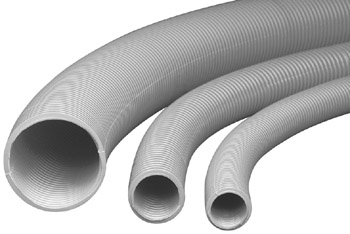
Figure 5-7: Flexible structured wiring conduit
Photo courtesy of Lamson & Sessions.
A chase is a channel placed in a floor to provide an enclosed and out-of-the-way path for cabling that must cross a room or travel between two floors. Typically, chases are either inserted between floors of a multiple story home or, in the case of a concrete floor, cut into the floor and fitted with a cover. Raceways are trays and molded covers that provide both support and a path for cable crossing an open area.
To provide for future proofing and to support any future cable installations, install conduit or raceway or install chases between floors between key device locations and future access points.
Review
Structured wiring facilitates interconnection of the data, video, and audio systems in a home to create an integrated environment. Structured wiring means the wiring for the home’s voice, data, audio, video, and control networks are all home run to a central location.
The three primary components of a structured wiring system are: cable or wiring, distribution panel, and outlets or access points.
The recommendation for the minimum wiring to each room of a new house includes: 2 runs of Cat 5e (UTP) and 2 runs of RG6 coaxial cable at minimum. Additional runs of RG6 coaxial cable and UTP cable should be pulled to support audio, video, speakers, controls, and any other devices located in a room, along with any cable being installed for future-proofing. The primary concern for pulling cable into an existing structure is to spread the runs of the various cable types over as wide a space as possible.
New cable bundle types are now available that incorporate all of the wiring recommended for a structured wiring installation. These bundles include 2 Cat 5e cables for voice and data, 2-shielded RG6 coaxial cables for video, and sometimes 2 multimode fiber optic cables for present or future applications.
The distribution panel provides the system and the homeowners with a single central location where all incoming source signals are integrated with the structured distributed wiring in the home. Depending on the needs of the system, the distribution panel can be used to connect incoming video, audio, telephone, and data signals to the appropriate wiring that will carry the signals to an outlet for connection and use.
The distribution panel can also serve as the hub of the star topology recommended for home automation and multimedia distribution systems. Each structured wiring run is home run from the room to the distribution panel.
Modularity is a primary characteristic and key benefit of a structured wiring distribution panel. Service unit modules, like an audio distribution module, data hub, or the like, can be added to the distribution panel anytime, not just at installation, as services are added to the system. Using a distribution panel provides several benefits to the homeowners: added flexibility, future adaptability, and future upgrade.
Questions
- Structured wiring is defined as
- The electrical wiring running from the electrical distribution box to each room.
- The wiring for audio, video, data, and control systems designed and installed as a single wiring system.
- The wiring running from a source device to an outlet device.
- The use of a single cable that incorporates all of the wiring in a home.
- Which one of the following is not a primary component of a structured wiring system?
- Cabling
- Speakers
- Distribution panel
- Outlets and access points
- Which of the following is the minimum recommended cabling that should be pulled into each room of a home being constructed?
- 1 run of UTP and 2 runs of coaxial cable
- 1 run of coaxial cable and 2 runs of UTP
- 2 runs of UTP and 2 runs of coaxial cable
- 3 runs of UTP and 1 run of coaxial cable
- What are the two structured wiring components recommended for installation to help future-proof a home?
- Extra cabling and conduit
- Extra outlets and connectors
- Extra remote controls and IR receivers
- Extra source equipment and distribution devices
- What device or module should be installed in a distribution panel to protect other modules and distribution devices from spikes on its power supply line?
- DC transformer
- Line filter
- Surge suppressor
- UPS
- What is the current UTP cable standard for structured wiring?
- RG6
- Fiber optic
- Cat 3
- Cat 5
- Which structured wiring device is used to interconnect cabling in a centralized location?
- Ethernet hub
- Internet Gateway
- Distribution panel
- Outlet box
- When is the best and usually easiest time to install structured wiring?
- Retrofit
- Before wall studs and joists are installed
- Before the wall surface or drywall is installed
- After the wall surface or drywall is installed
- Which of the following is not typically integrated into a distribution panel in a structured wiring system?
- Electrical cabling
- Telephone cabling
- Audio cabling
- Video cabling
- The term “future-proofing” refers to
- Preventing expansion of a system beyond its intended design.
- Ensuring that changes to a home’s systems are compatible with existing systems.
- Ensuring that a system has the capability to support new or expanded systems.
- Providing a means to remove a cable-based system in favor of a wireless system.
Answers
- B. Structured wiring is installed as a structured system with centralized control and distribution.
- B. Only the cabling, distribution panel, and access outlets are considered as a part of a structured wiring system. External source and playback devices are not.
- C. Two runs of UTP and 2 runs of coaxial cable is the minimum cable service recommended for each room of a home with a structured wiring system.
- A. Pre-installing extra cabling and conduits not only helps to prepare a home for future system changes and additions, but it is much less expensive to install the extra components while the structured wiring components are being installed at the same time.
- D. A DC transformer is not a protective device and the other two are usually too large for inclusion in a distribution panel. However, a UPS is not a bad idea for installation between the main power connection of the distribution panel and the electrical power outlet.
- D. In fact, the standards now specify Cat 5e, where the “e” represents enhanced cable.
- E. This device provides interconnection for each cable system included in the structured wiring of a home.
- C. The wall studs and ceiling and floor joists are important to the path of the structured cable and after the walls are finished, all work is retrofit.
- A. A home’s AC power lines are typically interconnected in the electrical panel or fuse box.
- C. Installing extra infrastructure to provide support for future systems extends the value of the installation system.
Part I - Home Technology Installation Basics
- Wire and Cable Basics
- Connector Types and Uses
- Wiring Installation Practices
- Codes, Standards, and Safety Practices
Part II - Structured Wiring
- Infrastructure Wiring Basics
- Planning a Structured Wiring Installation
- Rough-In Installation
- Trim-Out Installation
- Troubleshooting Structured Wiring
Part III - Home Computer Networks
- Computer Network Basics
- Computer Network Hardware
- Computer Network Software
- Designing and Installing a Computer Network
- Troubleshooting a Home Network
Part IV - Audio/Video Systems
- Distributed Audio System Basics
- Designing and Installing Distributed Audio Systems
- Distributed Video Basics
- Designing and Installing Distributed Video Systems
- Troubleshooting Audio Systems
- Troubleshooting Video Systems
Part V. Home Lighting Management Systems
- Home Lighting Basics
- Home Lighting Devices
- Designing a Home Lighting Control System
- Installing a Home Lighting Control System
- Troubleshooting and Maintaining Lighting Control Systems
Part VI - Telecommunications
- Home Communication System Basics
- Designing and Installing a Home Telephone System
- Troubleshooting a Home Communication System
Part VII - HVAC and Water Management
Part VIII - Security System Basics
- Security System Basics
- Designing a Home Security System
- Installing a Home Security System
- Troubleshooting and Maintaining a Home Security System
- Home Security Surveillance Systems
- Home Access Control Systems
Part IX - Home Technology Integration
- Defining Users Needs and Desires
- User Interfaces
- Home Automation Controllers
- Programming
- Integrating the Connected Home
- Other Home Technology Integration Devices
Part X - Appendices
EAN: N/A
Pages: 300
